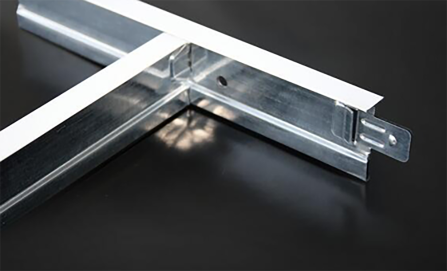- Afrikaans
- Albanian
- Amharic
- Arabic
- Armenian
- Azerbaijani
- Basque
- Belarusian
- Bengali
- Bosnian
- Bulgarian
- Catalan
- Cebuano
- Corsican
- Croatian
- Czech
- Danish
- Dutch
- English
- Esperanto
- Estonian
- French
- German
- Greek
- Hindi
- Indonesian
- irish
- Italian
- Japanese
- Korean
- Lao
- Malay
- Myanmar
- Norwegian
- Norwegian
- Polish
- Portuguese
- Romanian
- Russian
- Serbian
- Spanish
- Swedish
- Thai
- Turkish
- Ukrainian
- Uzbek
- Vietnamese
Dez . 01, 2024 10:48 Back to list
acoustical ceiling grid
The Versatility and Functionality of Acoustical Ceiling Grids
Acoustical ceiling grids have gained significant popularity in modern architecture and interior design, primarily due to their functional benefits and aesthetic appeal. These systems not only provide essential acoustic treatment but also serve as a versatile framework for various ceiling materials, making them a go-to choice for commercial, residential, and industrial spaces.
Understanding Acoustical Ceiling Grids
An acoustical ceiling grid is a framework typically made from lightweight metal or other materials that supports acoustic tiles or panels. This grid system allows for the easy installation of ceiling tiles that are specifically designed to absorb sound, reduce echoes, and improve the overall acoustics of a room. Moreover, the grid itself adds a level of structural support and a clean, finished look to the ceiling.
Acoustic Performance
One of the primary functions of acoustical ceiling grids is to enhance acoustic performance. In environment settings like offices, classrooms, conference rooms, and theaters, controlling sound quality is crucial. Hard surfaces can lead to disruptive noise levels and echo, negatively impacting communication and concentration. By integrating acoustical tiles into the grid system, these issues can be effectively mitigated.
Acoustic tiles are manufactured from various materials including mineral fiber, fiberglass, and even recycled content, designed specifically to absorb sound waves. This results in reduced reverberation times, making spaces more conducive to auditory comfort. The optimal acoustical ceiling grid will not only improve clarity during conversations but also enhance the listening experience during presentations or performances.
Aesthetic Appeal
Beyond their functional attributes, acoustical ceiling grids can significantly enhance the aesthetic elements of a space. Available in a variety of styles, colors, and finishes, these grid systems allow designers to create visually appealing environments. Whether aiming for a sleek, modern look or a more traditional aesthetic, the flexibility of acoustical ceiling grids means they can complement a wide range of architectural styles.
acoustical ceiling grid

Moreover, the ceilings can be customized by varying tile sizes and shapes, or even incorporating bespoke designs. Some grids allow the integration of lighting fixtures directly into the design, helping to create an all-encompassing lighting plan that benefits both functionality and design.
Easy Installation and Maintenance
Another appealing aspect of acoustical ceiling grids is the ease of installation and maintenance they offer. The modular design means that tiles can be easily replaced without the need for extensive renovation. If a tile gets damaged, or if there’s a need to access utilities above the ceiling, they can simply be lifted out and replaced, making upkeep straightforward and cost-effective.
These systems also promote easy access to electrical, plumbing, and HVAC systems installed above them. This flexibility allows buildings to adapt to changing needs over time, whether it’s a need for more lighting, additional ventilation, or other modifications.
Sustainability Considerations
In today’s eco-conscious world, sustainability is a crucial factor in building design. Many manufacturers of acoustical ceiling grids are now focusing on producing environmentally friendly products. Acoustic panels made from recycled materials or designed for high energy efficiency are increasingly available, allowing designers and architects to implement greener solutions in their projects. Moreover, the durability of these systems contributes to longer life cycles, ultimately reducing waste.
Conclusion
In summary, acoustical ceiling grids are a remarkable innovation in the field of architecture and interior design. They provide immense acoustic benefits, enhance visual aesthetics, and offer practicality in installation and maintenance. Furthermore, their adaptability and sustainability contribute to modern building requirements and environmental considerations. Whether for enhancing sound quality in a bustling office or achieving a sophisticated look in a theater, acoustical ceiling grids have become an essential component of contemporary design, making them an excellent choice for any space. As trends in acoustical design continue to evolve, these grids are likely to remain at the forefront, blending functionality with style in ways that satisfy both practical needs and artistic aspirations.
-
Transform Interiors with PVC Gypsum Ceiling: A Stylish, Durable, and Moisture-Resistant SolutionNewsMay.19,2025
-
The Smart Interior Upgrade: Discover the Durability and Versatility of Gypsum Ceiling Access Panel SolutionsNewsMay.19,2025
-
The Smart Choice for Interior Design: Discover the Value of PVC Gypsum Ceiling SolutionsNewsMay.19,2025
-
Mineral Fiber Ceiling Tiles: The Smart Blend of Performance and AestheticsNewsMay.19,2025
-
Mineral Fiber Ceiling Tiles: The Superior Choice Over Gypsum for Sound and Fire SafetyNewsMay.19,2025
-
Mineral Fiber Ceiling Tiles: Eco-Friendly Strength and Style for Every CeilingNewsMay.19,2025







